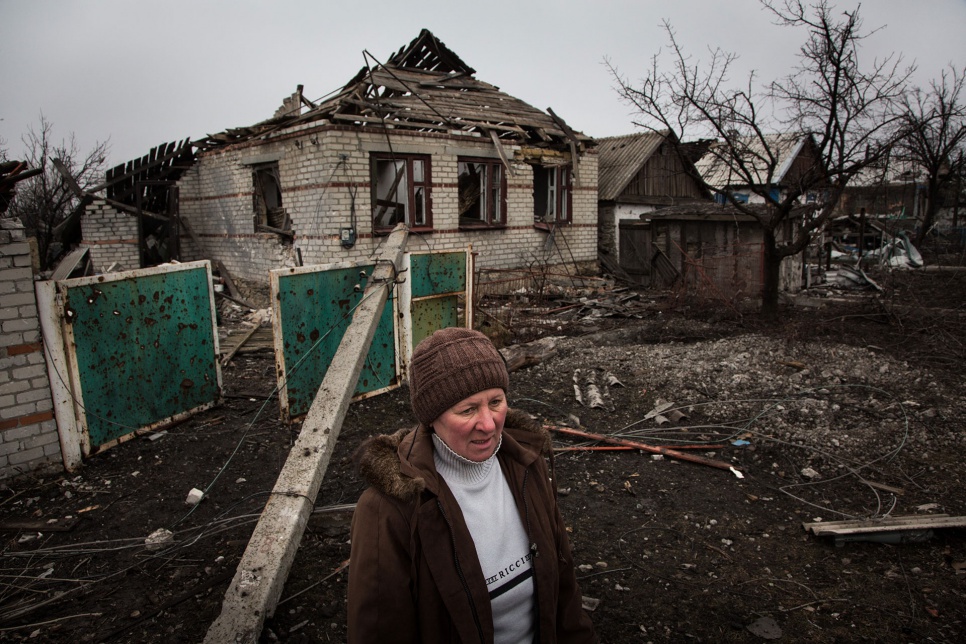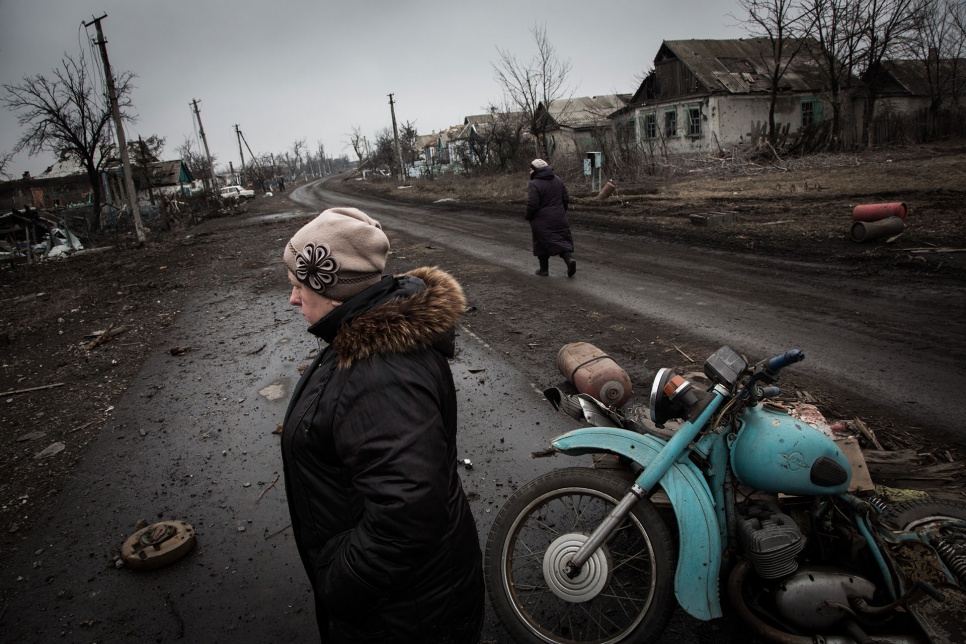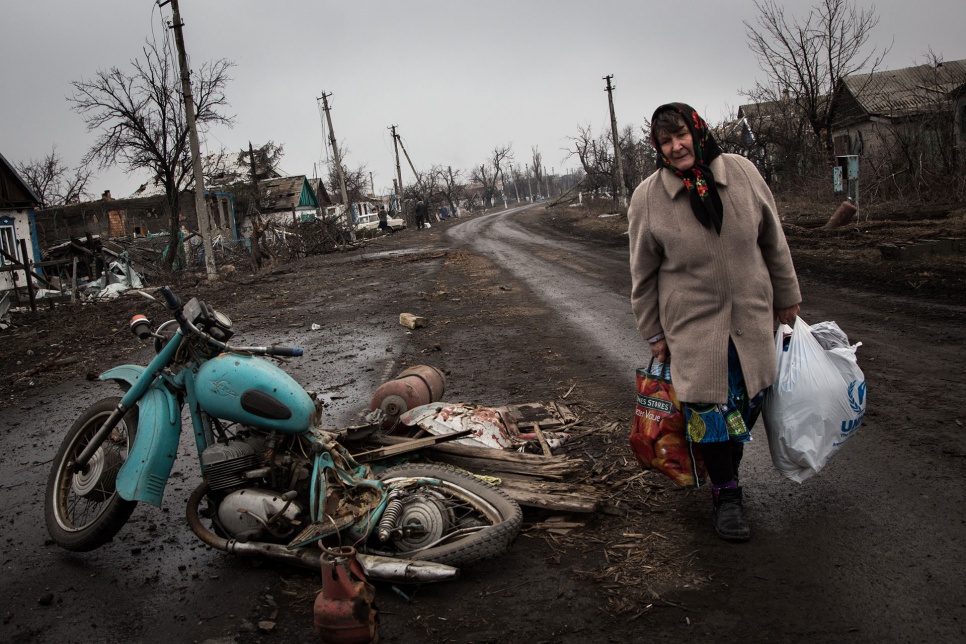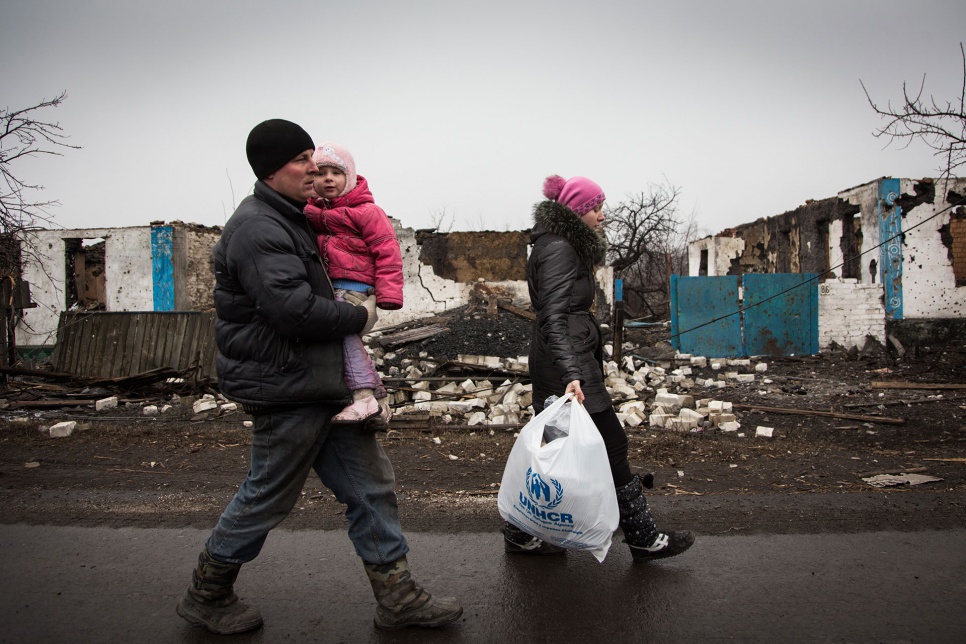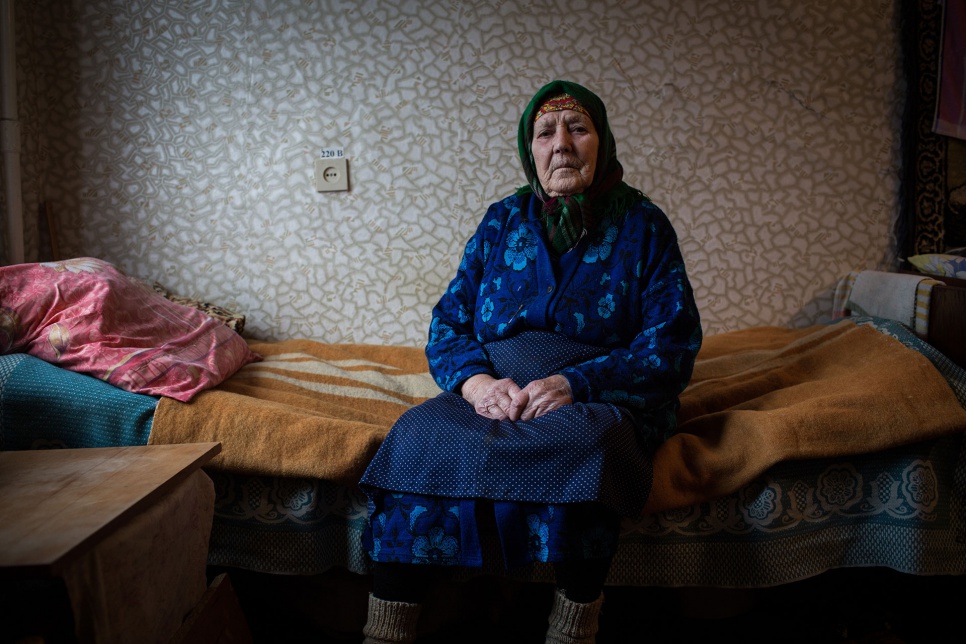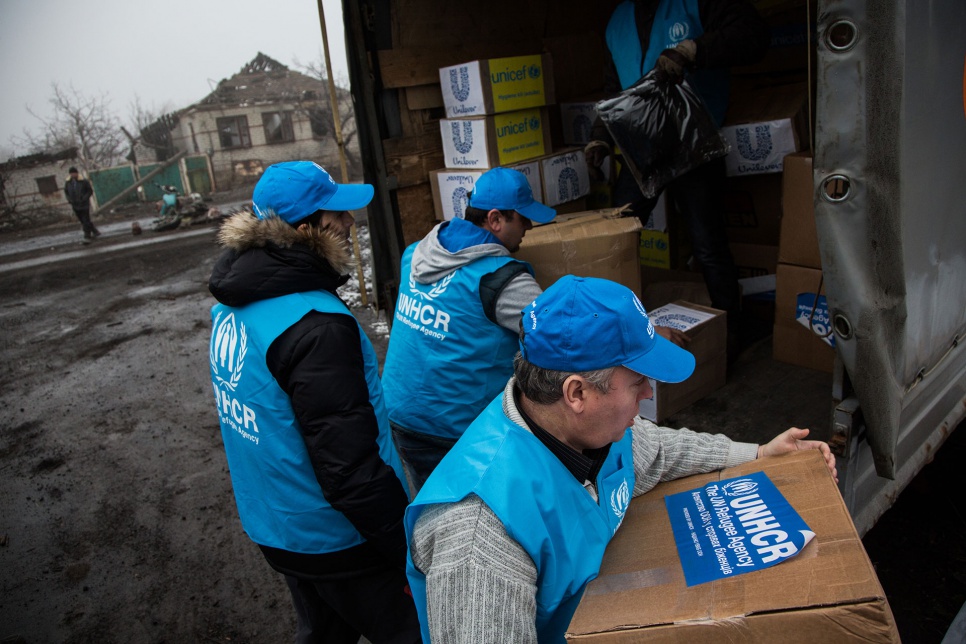Sparks of hope among the ashes
The shelling did not spare a single building in Nikishino, Ukraine. Yet within days of the ceasefire people were coming back to start to rebuild.
Galina carries her only possessions through the ruins of Nikishino, Ukraine.
© UNHCR/Andrew McConnell
Nikishino is a shell, a town blasted by conflict. It was home to 900 people before the fighting started in eastern Ukraine, but then found itself on the line of battle for more than six months. Now little is left intact. But that did not stop many of the people of Nikishino from coming back to their homes in the first days after the ceasefire negotiated in February.
Like a giant skeletal robot, its veins slashed and bled dry, the electrical pylon stands in the fog of eastern Ukraine. It is one of many on the road to Nikishino, a sort of honour guard of destruction, leading to a town of almost total desolation.
In the street Galina stands like a sentinel, staring into an unknown future. She holds two plastic bags, one with aid donated by UN agencies, the other from the Irish department store Dunnes, holding personal effects from her destroyed house. She has just come from there and is going to the house of her dead mother, a rare dwelling relatively unscathed by the conflict.
"I'm 65," Galina says. "And everything I have, I'm holding."
In several decades of reporting, I've seen the effects of wars in Afghanistan, the Middle East and eastern Europe. Nikishino stands at the head of the list of destruction. Not a building, not a dwelling was untouched.
Yet, within days of the ceasefire, people were driving back to start to rebuild. And when the trucks of UNHCR arrived with packages of aid, almost 200 people were waiting patiently, most having signed a petition to the authorities to send experts to clear away the unexploded ordinance in the streets and gardens of the town.
Why come back to danger and destruction?

Sparks of Hope among the Ashes: Yuriy Leonov and Tatiana Leonova stand among the ruins of their home in Nikishino, eastern Ukraine.
Tatiana Leonova stands with her husband Yuriy before the tableau of loss that is their house. Her answer encapsulates the almost visceral need to come home.
"This is our motherland. This is where our grandmother and grandfather lived. We have been here for 80 years and we have always lived in the same house. My grandfather survived the Second World War and he couldn't imagine that this would happen one day, that our people will fight our people."
Next door Sergei, Katia and their three-year-old daughter are looking over their house. It was damaged and then pillaged during the fighting. They have already repaired part of the roof. Both Sergei and Katia grew up here and talk of the river, of the beauty and fishing in the summer. And, Sergei says, as soon as spring comes, we'll plant the vegetable garden.
Planting the garden – another visceral need. The desire isn't aesthetic; they will be eating the vegetables fresh in the summer and pickled the following winter.
Others haven't yet returned. Thirty residents of the broken town live in a collective shelter in nearby Shakhtarsk. Alexandra Leonova is 91 and remembers World War II. "I was 18 when World War II broke out," Alexandra said. "But this is worse because I have lost everything. Everything was destroyed."
Nastya, 11, also lives at the collective shelter along with her teacher, Ludmila, who is 69. Because of the shelling, Nastya missed five months of school, and spent weeks living in the family basement. "At first I was really frightened but with time I got used to the bombs and the shooting," says Nastya. "I didn't cry."
Such stoicism is a shared quality in the region. Stoically they will return and rebuild, despite the fear expressed by several that the fighting will return.
What they need now to complement their stoicism and will, is help and the physical materials to rebuild a broken town and a lost life.


